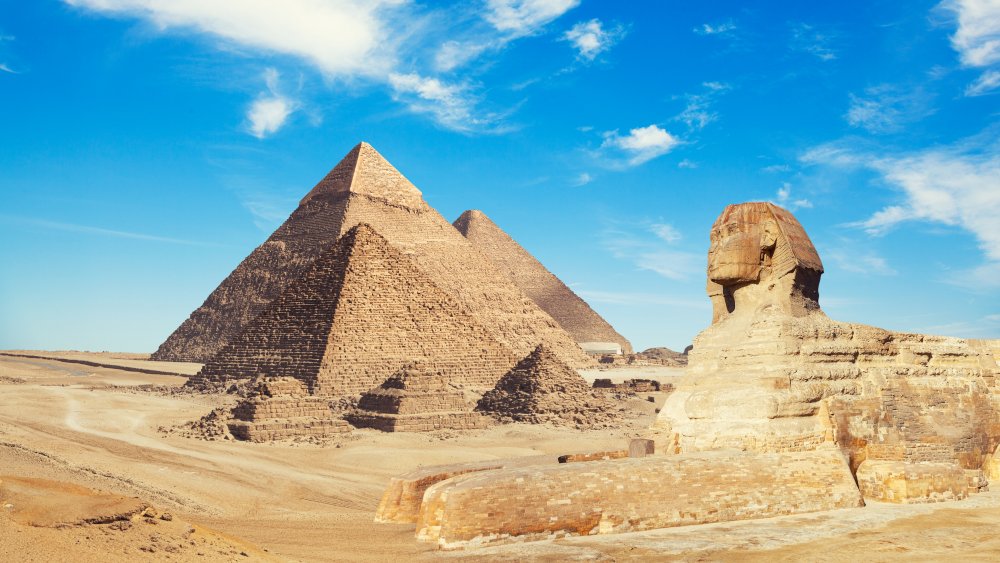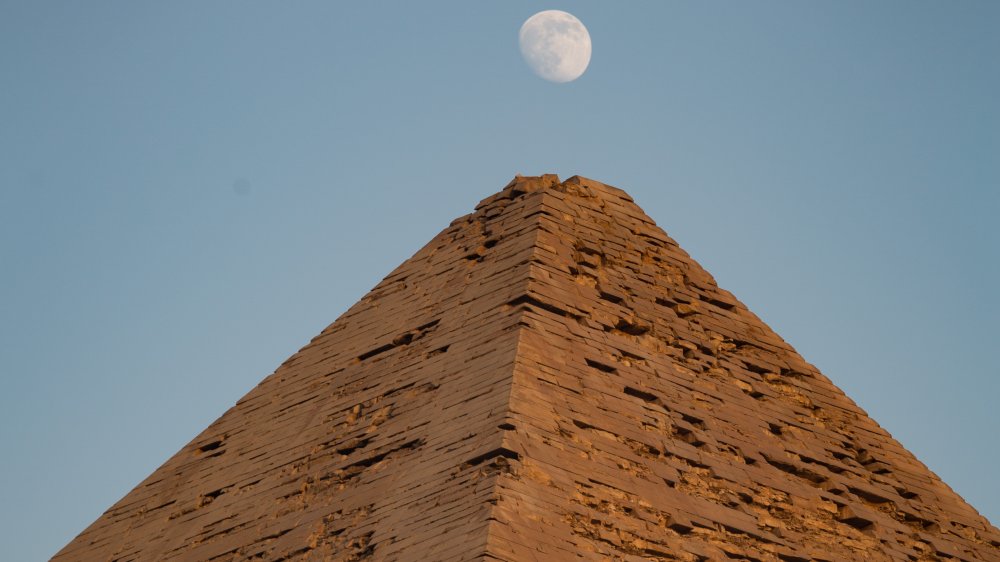What You Didn't Know About The Great Pyramid
Of the many things about ancient Egypt that still can't be explained, the Great Pyramid of Giza remains a perpetual favorite. The only remaining location from the original Seven Wonders of the Ancient World, it's been around since about 2560 BCE, and for thousands of years was thought to have three chambers, as per NewScientist: the Queen's Chamber, the Grand Gallery, and the King's Chamber. A recent scientific breakthrough, however, brought to light previously unknown information about the pyramid's interior. In addition to the three chambers, "there are two tunnels, about 20 centimetres by 20 centimetres, that extend from the north and south walls of the Queen's Chamber and stop at stone doors before they reach the outside of the pyramid." Could these lead to other chambers?
As reported by The Telegraph in 2016, Scan Pyramids, "a collaborative project involving a number of universities, companies and scientific institutes," used "muography, thermography and 3D simulation" to get behind those stone doors at last and find out what else could be found in the Great Pyramind. Muography, according to Seeker, uses "muons, [or] cosmic particles that permanently and naturally rain on Earth, which are able to penetrate any material very deeply" to take what amounts to x-ray images of previously impenetrable pyramid walls.
Ancient mysteries ready to be solved?
Another Telegraph article, this one from 2017, interviewed expedition leader Mehdi Tayoubi, who described his team's findings as a "big void ... the height of the Statue of Liberty" that "could be a second grand gallery, it could be a chamber. We are working with archaeologists to compare it to other chambers, The void is there, it's very big. It was not expected by any kind of theory."
One hypothesis regarding the void's original purpose came from Dr. Kate Spence, who posits that the discovery is not a secret chamber, but may be a clue as to how people originally built the Great Pyramids, which has been its own mystery for as long as people have studied them. "I think it is an inclined ramp that was used to transport huge blocks into the center of the pyramid and then sealed off by the builders," suggested Spence. "Although that might not sound as exciting as a secret burial chamber, in fact, this would be the first evidence of the use of a ramp inside, which gives us a really important insight into how those huge bricks were put into position and how pyramids were constructed."

